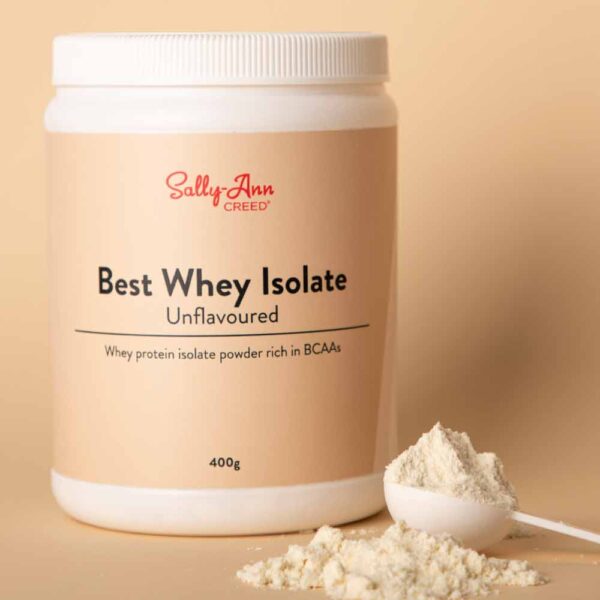Sarcopenia, a Greek term for “poverty of the flesh, ” describes the loss of muscle mass, function and strength from the ageing process. This can result in a decreased quality of life, increased falls and injury and inability to perform daily tasks. Did you know that after the age of 60, adults generally lose around 8% muscle mass per decade. So how can we prevent or slow this process from happening to help our family, parents and friends?
Firstly, it is important to recognise symptoms of sarcopenia.
- Do I have difficulty lifting or carrying more than 4.5kg?
- Do I have difficulty walking across the room?
- Do I have a weak grip strength?
- Have I fallen more than once this year?
If you have answered yes to any of the above questions then let’s have a look at how a functional nutrition approach can help.
Total calorie intake is important for ageing. So often we see in older clients and patients that there is a tendency to under-eat due to taste changes, decreased appetite and eating difficulties. It is important for us to monitor that we are getting in enough energy from a balanced, nutritious diet that will support our body. If we under-eat, our body naturally uses fat for fuel, and then muscle for energy to live and move.
On the other hand, we also often eat enough calories, but have an “empty calorie” intake, meaning that we eat non-nutritious foods but high in calories (think chips or pastries). Focusing on ensuring that we get enough protein in our ageing years is vital for muscle loss prevention. At least 0.8g/kg/day with the aim of at least 1g/kg per day to 1.2-1.6g/kg per day for older adults’ metabolism and if living with illness or disease. Simple ways to reach this easily, will be to ensure that we have protein at each meal (aiming for around 25-35g of protein per meal) and ensuring that we eat protein first before carbohydrates (so we don’t get full). Whey protein is also a supplement to consider if you are not getting enough protein in the day. Whey protein also contains leucine which is an amino acid that is involved in muscle maintenance. Another reason why we love collagen is that, as we age- our body produces less and less natural collagen, and collagen is important for the creation of muscle protein such as creatine which stimulates muscle growth and repair.
Vitamin D is an important supplementation for sarcopenia prevention. This is a fat soluble vitamin involved in calcium absorption, bone formation and helps maintain muscle strength and function. Another nutrient to watch for is the anti-inflammatory omega 3. If you are not getting two portions of fatty fish a week or regularly consume chia seeds or flaxseed oil- an omega 3 supplement is needed. Omega 3 may help with muscle growth and intramuscular strength.
Lastly, along with nutrition, exercise is the most effective intervention for improving quality of life in sarcopenic patients. Rogan Heyns, a local Capetonian biokineticist, mentions that he uses following as outlined by the American College of Sports Medicine (ACSM):
- Progressive Resistance Training: This involves using weights, resistance bands, or body weight to progressively increase the load on muscles. It helps stimulate muscle growth and strength.
- Exercise Frequency: At least 2-3 days per week of resistance training is recommended, targeting all major muscle groups.
- Intensity: The intensity should be moderate to high (around 60-80% of the individual’s one-rep max). Initially, beginners may start with lighter loads and progressively increase.
- Functional Exercises: Focus on movements that mimic daily activities, such as squats, lunges, and stair climbing, to improve overall mobility and balance.
- Combining Aerobic Exercise: While resistance training is key, incorporating aerobic exercises (e.g., walking, cycling) helps maintain cardiovascular health and overall fitness, which supports muscle preservation.
Consistent training helps to maintain or rebuild muscle mass, strength, and function, which is crucial in preventing frailty and improving the quality of life in older adults.
*For the science gurus out there, have you heard about Beta-hydroxy-Beta-methylbutyrate (HMB)? This is a derivative of Leucine (an amino acid involved in protein synthesis). Research showed that taking 3-4 grams of HMB each day for 7 days to 6 months was much better at preventing muscle loss compared to a placebo. Similarly, other studies with older adults found that HMB helps maintain muscle mass during times of bed rest. Definitely, a supplement that we can watch research for.
References:







